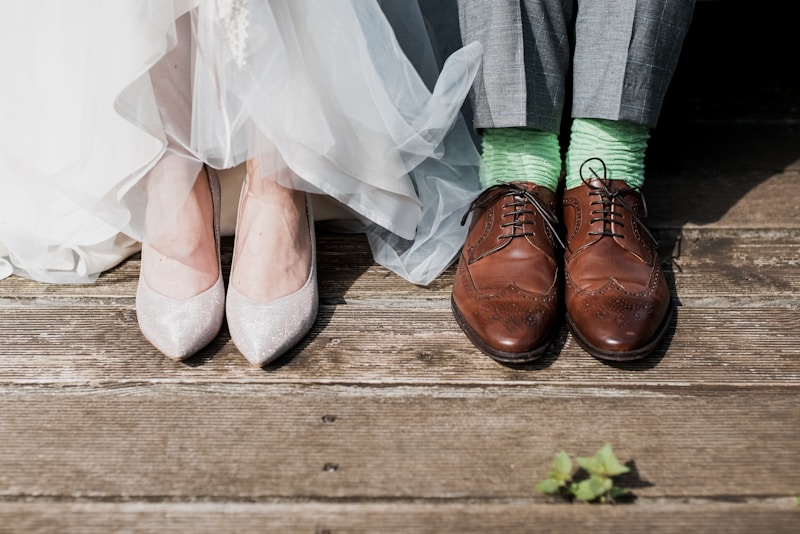Cultural Influences on Bridal Spending: An In-Depth Analysis
Cultural Influences on Bridal Spending: An In-Depth Analysis
The world of weddings is a tapestry woven with traditions, beliefs, and financial decisions influenced by various cultural factors. Understanding how culture impacts bridal spending can shed light on the choices couples make as they prepare for one of the most important days of their lives. This article delves into the numerous cultural influences on bridal spending, providing insights for couples, wedding planners, and vendors alike.
Understanding Cultural Influences
Cultural traditions shape our perceptions and behaviors, particularly during significant life events like weddings. These influences can dictate everything from the type of ceremony to the budget allocated for various elements of the wedding. For example, in some cultures, it is customary for the bride's family to bear most of the wedding costs, while in others, expenses are shared or primarily undertaken by the groom's family. These customs can significantly affect bridal spending.
Bridal Spending Across Different Cultures
Bridal spending can vary tremendously between cultures. Below is a summary of how different cultural practices influence wedding budgets.
| Culture | Typical Bridal Spending Influences | Notable Expenses |
| Western Weddings | Individualism, emphasis on personal choice | Venue, dress, photography |
| Indian Weddings | Extravagance, cultural significance of marriage | Multiple events, lavish decorations |
| Chinese Weddings | Traditional customs, gift-giving | Wedding banquet, red envelopes |
| African Weddings | Community involvement, vibrant celebrations | Cultural attire, livestock |
| Japanese Weddings | Traditional vs. modern influences | Shinto ceremonies, reception |
The Impact of Traditions
In many cultures, weddings are not solely about the couple but are significant community events. For example, in Indian weddings, the customs and rituals can lead to considerable spending. The Mehndi ceremony, for instance, often showcases intricate henna designs on the bride's hands and feet, reflecting the family's wealth. Similarly, the engagement party, sangeet, and the wedding day itself typically involve elaborate festivities, which can cause costs to soar.

Conversely, in Western cultures, brides may decide to allocate more resources to personal preferences or experiences, such as unique venues or bespoke wedding dresses. The push towards personalization can often lead to higher spending, reflecting contemporary values around individuality and expression.
Regional Variations in Bridal Spending
The differences in bridal spending are not only cultural but also regional. For example, couples in metropolitan areas often allocate a larger budget for their weddings compared to those in rural areas. A Miami couple may spend an average of $35,000 on their wedding, reflecting a desire for luxury and extravagance, whereas a couple in a smaller town might spend significantly less, focusing on intimate gatherings and simplicity.
Influence of Economic Factors
The financial landscape greatly influences bridal spending. Economic factors such as income levels, job stability, and local cost of living can dictate how much a couple can afford to spend on their wedding. In high-income regions, couples may indulge in high-budget weddings, while in economically challenged areas, spending might be conservative.
Breaking Down Bridal Expenditures
Understanding where the money goes during a wedding can also clarify how cultural influences manifest in spending behavior. Here’s a breakdown of common expenses for a wedding:
| Expense Category | Percentage of Total Budget |
| Venue | 30% |
| Catering | 25% |
| Attire | 10% |
| Decorations | 15% |
| Photography/Videography | 10% |
| Other (entertainment, etc.) | 10% |
The Role of Social Media and Modern Trends
In today's digital age, social media platforms like Instagram and Pinterest heavily influence bridal spending. The prevalence of "Instagrammable" weddings has led couples to spend more on aesthetic details, from floral arrangements to venue selection. The desire for a unique and visually appealing wedding experience can lead to increased costs, as couples feel pressured to curate the perfect event that can be shared online.
Furthermore, the rise of wedding influencers and bloggers provides a wealth of ideas and inspiration that can shape couples' expectations regarding the costs associated with weddings. As couples are exposed to lavish wedding setups and unique concepts, many may feel compelled to adopt similar trends, often leading to budget overruns.
Advice for Couples: Managing Bridal Spending
To navigate the different cultural influences on bridal spending while remaining within budget, couples should consider the following tips:
- Set a Budget: Establish a realistic budget based on personal financial situations, cultural expectations, and priorities.
- Research: Understand local customs and traditions surrounding weddings to prepare for expected expenses.
- Be Flexible: Try to adapt some traditional elements to fit a more modern budget wherever possible.
- DIY Elements: Consider incorporating DIY projects for décor or invitations to save costs.
- Limit Guest List: A smaller guest list can significantly reduce overall expenses.
- Comparison Shop: Compare prices from different vendors and make informed choices based on value rather than prestige.
Concluding Thoughts on Bridal Spending Cultures
The cultural influences on bridal spending continue to be complex and multifaceted. By understanding these influences, couples can make informed decisions that honor their cultural backgrounds while also managing financial expectations. It is essential to find a balance between cultural significance and personal preferences to ensure a memorable day that is also financially feasible. As couples embark on this journey, being aware of their values and the intricate dynamics at play can help pave the way for a joyous, stress-free wedding experience.
